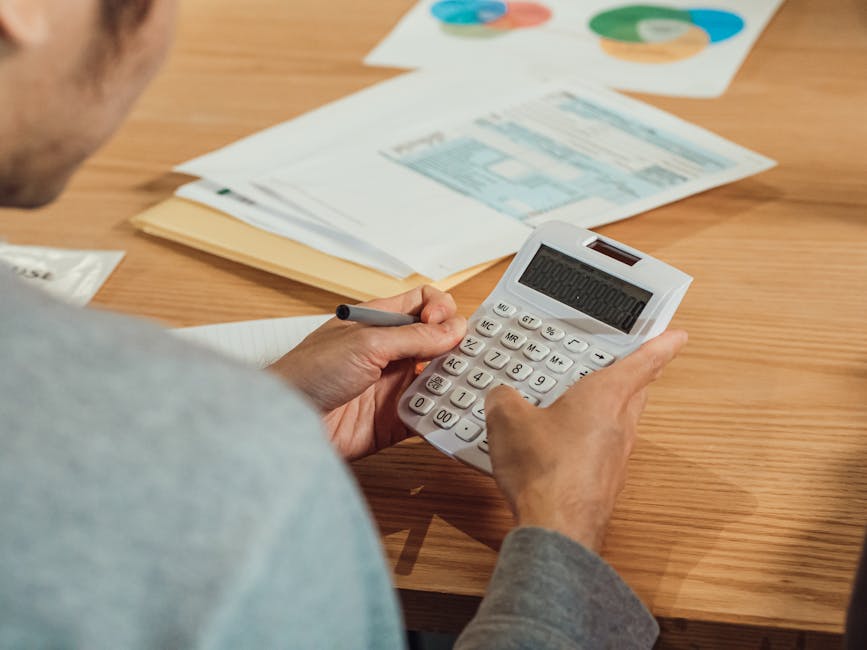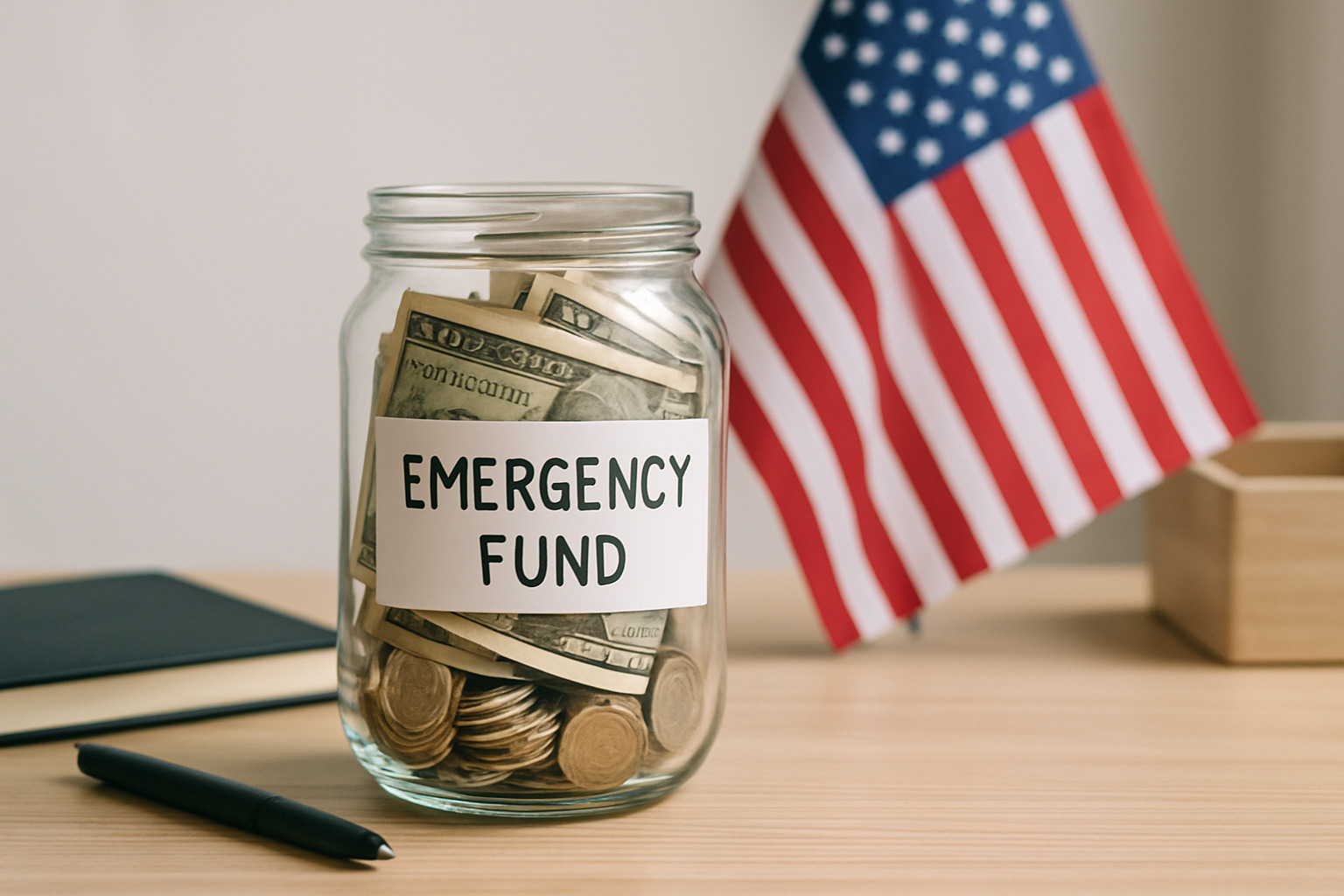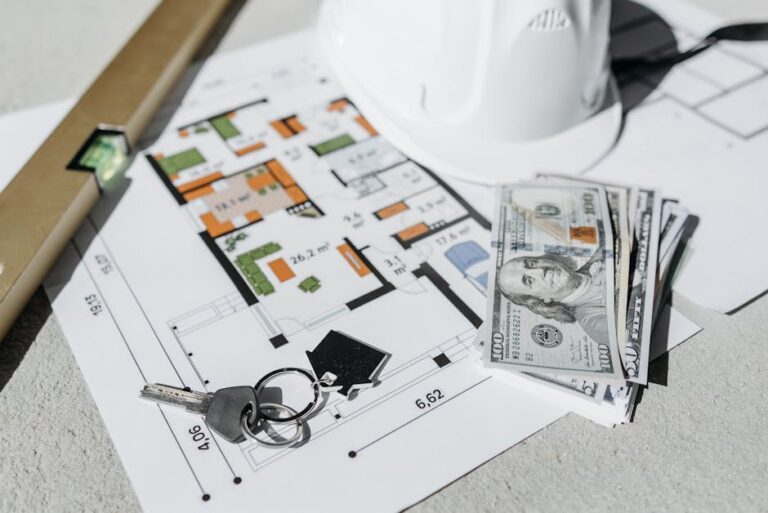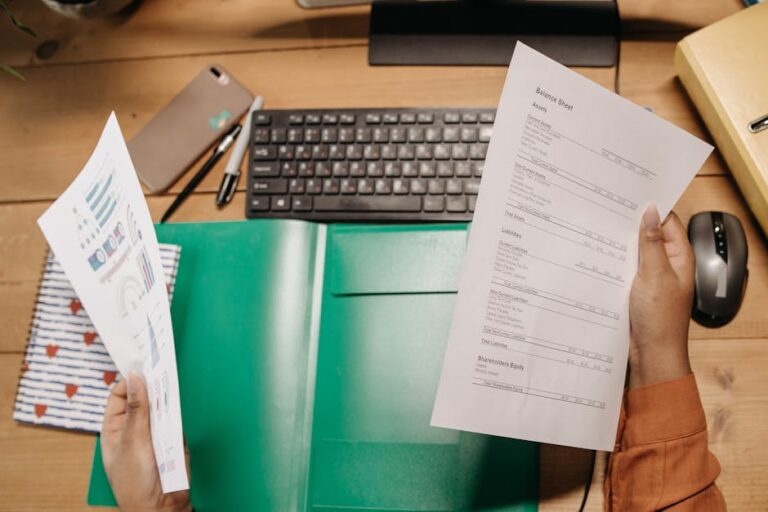The Definitive Guide to Emergency Fund Size
Emergency fund size recommendations vary based on your personal situation, but here’s a quick reference:
| Your Situation | Recommended Fund Size |
|---|---|
| Paying off high-interest debt | 1 month of expenses (minimum $1,000) |
| Standard recommendation | 3-6 months of expenses |
| Self-employed/variable income | 6-12 months of expenses |
| Near retirement | 12-24 months of expenses |
Life is unpredictable. A sudden car repair, medical emergency, or job loss can derail your finances in an instant. That’s where an emergency fund comes in – your financial shock absorber for life’s bumpy roads.
An emergency fund is money set aside specifically for unexpected expenses or income disruptions. It’s not for vacations, holiday gifts, or planned expenses – it’s your financial safety net when things go wrong.
Almost half of Americans would struggle to cover a $400 emergency expense, according to Federal Reserve data. Without adequate savings, even minor financial shocks can force you into high-interest debt, creating a cycle that’s hard to escape.
As Lynnette Khalfani-Cox, a personal finance expert, puts it: “Cash is king when income streams are uncertain.” Having the right emergency fund size can mean the difference between weathering a financial storm comfortably or sinking into debt.
In this guide, we’ll help you determine exactly how big your emergency fund should be based on your specific situation, where to keep it, and how to build it – even if you’re living paycheck to paycheck.

Why You Need an Emergency Fund
Life has a funny way of throwing curveballs when you least expect them. Your car might break down the same week your refrigerator gives up. Or perhaps you’re facing unexpected medical bills while simultaneously receiving news of company layoffs. Without a financial safety net, these situations can quickly transform from inconvenient to catastrophic.
A Federal Reserve study reveals that about 43% of Americans would tap into their savings during a financial emergency. But what happens when there’s nothing to tap into? That’s when many turn to high-interest credit cards, predatory payday loans, or early retirement withdrawals – all options that can damage your long-term financial health.
An emergency fund does more than just provide financial protection; it delivers genuine peace of mind. There’s something incredibly reassuring about knowing you have money specifically earmarked for unexpected expenses.
What Counts as a True Emergency?
Not every unexpected expense deserves to drain your carefully built safety net. To protect your emergency fund size, it’s crucial to establish clear boundaries around what constitutes a genuine emergency.
True emergencies typically include essential car repairs when your vehicle is necessary for work, medical or dental emergencies not covered by insurance, and home repairs affecting safety (like a broken furnace in winter). Job loss, significant income reduction, and emergency travel to care for seriously ill family members also qualify.
On the flip side, planned expenses (even large ones), vacations, holiday shopping, regular home maintenance, and non-essential purchases don’t make the cut. Being disciplined about when to tap your emergency fund ensures the money will be there when you truly need it most.
What Expenses Should the Fund Cover?
Your emergency fund size should be calculated to cover your essential living expenses – the non-negotiable costs you absolutely cannot live without. These typically include your housing costs (rent or mortgage), utilities (electricity, water, gas, basic phone service), and groceries for basic nutrition.
You’ll also need to account for transportation costs to get to work, healthcare insurance premiums and essential medications, childcare if necessary for employment, and minimum debt payments to avoid defaults and credit damage.
Notice what’s missing from this list? Entertainment subscriptions, gym memberships, shopping sprees, restaurant meals, and other discretionary expenses. During a true financial emergency, these would be the first items you’d eliminate from your budget.
Finding Your Ideal Emergency Fund Size
Your perfect emergency fund size isn’t one-size-fits-all—it’s as unique as your financial situation. While you’ve probably heard the standard “save 3-6 months of expenses” advice, your ideal cushion might need to be larger or smaller depending on your personal circumstances.

Let’s look at what might work for different situations:
| Emergency Fund Target | Appropriate For | Example (Based on $5,000 Monthly Expenses) |
|---|---|---|
| $1,000 starter fund | Everyone, especially those with high-interest debt | $1,000 |
| 1 month of expenses | Those with stable jobs, dual incomes, minimal dependents | $5,000 |
| 3 months of expenses | Those with relatively stable employment and some safety nets | $15,000 |
| 6 months of expenses | Families with children, single-income households | $30,000 |
| 12+ months of expenses | Self-employed, commission-based, or highly specialized careers | $60,000+ |
Here’s a sobering reality check: Investopedia analysis shows the average recommended emergency fund size for American households is around $35,000—that’s six months of essential expenses, representing about 40% of the average annual household income.
Yet the median balance in transaction accounts for U.S. households? Only about $8,742—not even enough to cover two months of expenses for most families.
Quick-Start Formula: The $1,000–$2,467 Buffer
If you’re just beginning your emergency savings journey, start small but start now. A modest $1,000 emergency fund—what financial experts at Fidelity often recommend as a starting point—can prevent minor setbacks from becoming financial disasters.
For households earning less than 200% of the poverty line, a 2019 study found that even a small cushion of $2,467 (roughly one month’s income) significantly reduced financial hardship after unexpected expenses hit.
“Three months is a good starting point—then reevaluate annually,” notes financial advisor Jared Andreoli. His practical approach acknowledges that building your first emergency fund is about progress, not perfection.
More info about Building Emergency Savings
Advanced Calculation: Customizing Your Emergency Fund Size
For a more custom emergency fund size calculation that truly fits your life, follow these simple steps:
- Add up your essential monthly expenses (housing, utilities, food, transportation, insurance, minimum debt payments)
- Multiply by your target number of months (based on your situation)
- Adjust based on your personal risk factors
You’ll want a larger emergency fund if you’re self-employed or have irregular income, work in an industry prone to layoffs, support dependents on a single income, or have specialized skills that might make job-hunting take longer.
On the flip side, you might be comfortable with a slightly smaller fund if you have multiple income streams, excellent insurance coverage, other liquid assets, in-demand job skills, financially supportive family, or very flexible living expenses.
Best Places to Keep Your Emergency Cash
Once you’ve determined your ideal emergency fund size, the next question is where to keep it. The perfect emergency fund account balances three key factors: safety, liquidity, and yield.

Your emergency fund should be easily accessible when you need it, completely safe from market volatility, earning enough interest to fight inflation, and separate from your everyday spending money.
Let’s look at your best options:
High-yield savings accounts are the superstars of emergency funds. These online accounts often pay 10-15 times more interest than traditional banks, while still keeping your money FDIC-insured up to $250,000.
Money market accounts give you more flexibility, often including check-writing abilities and debit cards, while still paying competitive rates. They’re liquid but might limit how many transactions you can make each month.
Cash management accounts link to brokerages while combining features of checking, savings, and investment accounts. They typically offer solid yields and improved FDIC coverage for larger emergency funds.
Certificates of deposit (CDs) might work for a portion of your emergency savings—especially the part you’re less likely to need immediately. Short-term CDs generally offer higher yields but lock your money up for the specified term.
The Vanguard Cash Plus Account exemplifies a premium option for larger emergency funds, offering extended FDIC insurance coverage up to $1.25 million with competitive yields while keeping your money accessible.
How to Separate and Automate
The magic of a successful emergency fund often lies in keeping it separate from your everyday money. This separation creates both a physical and psychological barrier that makes it less tempting to “borrow” from your future self.
Creating this separation is surprisingly simple:
Open a dedicated account specifically for your emergency fund. Choose a high-yield savings or money market account that’s separate from your primary bank—just distant enough to be out of sight, but accessible within 1-2 business days when truly needed.
Set up automatic transfers to build your fund effortlessly. Even $25 or $50 per paycheck adds up remarkably over time. As financial advisor Jane Bryant Quinn says, “It’s not timing the market, it’s time in the market”—the same applies to saving consistently.
Split your direct deposit if your employer allows it. Having a portion of your paycheck deposited directly into your emergency fund means you’ll never “forget” to save.
Use round-up apps to painlessly boost your savings. These clever services round your purchases to the nearest dollar and sweep the change into savings.
More info about Emergency Savings Account
Building and Growing Your Fund on Any Income
Building an emergency fund might feel impossible when you’re stretching every dollar, but here’s the truth: you don’t need to save hundreds at once to create financial security. The real magic happens through consistency, not large deposits.

Think about this: saving just $10 a week—the cost of a quick lunch out—adds up to over $500 in a year. That’s enough to cover many common emergencies like a minor car repair or medical co-pay.
The secret that many financial experts recommend is to treat your savings like a bill. When payday comes, your emergency fund contribution should be as non-negotiable as your rent or electric bill. Set up an automatic transfer on payday so the money moves before you have a chance to spend it.
Windfalls offer perfect opportunities to boost your emergency fund size without feeling the pinch. The next time you receive a tax refund, work bonus, or cash gift, challenge yourself to save at least half.
Look around your home—you might be sitting on potential emergency fund cash. Those unworn clothes, unused electronics, or forgotten sports equipment could be converted into savings through online marketplaces or local consignment shops.
Research shows that consistent small contributions make a huge difference—$25 weekly becomes about $2,600 plus interest over two years. At $75 weekly, you’d have over $7,800—a substantial emergency fund size that could carry many households through several months of expenses.
Ready to accelerate your progress? Join our Emergency Savings Challenge for structured guidance and community support.
Low-Income or Variable-Income Strategies
When your income fluctuates or barely covers essentials, building an emergency fund requires creative approaches.
For those with unpredictable paychecks, percentage-based saving works better than fixed amounts. During busy seasons or higher-earning months, aim to save 20-30% of your income. This naturally adjusts your savings rate to what you can afford while ensuring you make significant progress during prosperous times.
Create a “feast or famine” buffer separate from your emergency fund. This smaller account helps smooth out income variations, allowing you to maintain consistent emergency fund contributions even during leaner months.
If you receive government benefits or tax refunds through programs like the Earned Income Tax Credit, these lump sums provide perfect opportunities to jumpstart your emergency savings.
High-Earners & Self-Employed: Advanced Tactics
Higher income often comes with unique challenges—larger fixed expenses, more complex tax situations, and for the self-employed, significant income volatility. Your emergency fund size may need to be substantially larger than average.
A tiered liquidity approach offers a neat solution for larger emergency funds. Keep 1-2 months of expenses in a high-yield savings account for immediate access. Place another 2-4 months in short-term CDs or money market funds for slightly better returns.
Self-employed individuals should maintain separate emergency funds for business and personal expenses. Your business might face different emergencies than your personal life, and keeping these funds separate ensures you’re prepared for both scenarios.
When to Tap Your Fund—and How to Replenish It Fast
Let’s face it – emergencies happen. That’s why you built your fund in the first place. Your emergency savings isn’t meant to sit untouched forever – it’s there to rescue you when life throws its inevitable curveballs.

But before you reach for that emergency cash, pause and ask yourself these four critical questions:
Is this truly unexpected? Your annual car insurance premium or holiday shopping isn’t a surprise – those are planned expenses you should budget for separately.
Is it genuinely necessary? The expense should be essential to your wellbeing or ability to earn income. A broken refrigerator? Yes. The latest smartphone model? Not so much.
Is it actually urgent? If you can reasonably delay the expense until your next paycheck or save up for it, it’s probably not an emergency.
Is the expense significant enough? Minor costs should come from your regular budget whenever possible. Your emergency fund is for bigger financial shocks.
When you do need to dip into your safety net, be strategic about it. Only withdraw what you absolutely need – if you can cover part of the expense from your regular budget, that’s ideal. Keep track of exactly how much you took out and why – this simple accountability step helps maintain discipline.
Most importantly, create your replenishment plan immediately. Don’t wait until next month to figure out how you’ll rebuild. Decide right away how you’ll restore those funds, even before you make the withdrawal.
Rebuilding After a Withdrawal
Once you’ve tapped your emergency fund, rebuilding it becomes your top financial priority. Think of it like restocking your medicine cabinet after an illness – you never know when you’ll need it again.
Here’s how to replenish quickly:
Implement a temporary austerity budget. This isn’t forever, but for a short time, cut all non-essential spending. That might mean brown-bagging lunch, pausing subscriptions, and saying “not right now” to social invitations that cost money.
Boost your income temporarily. Consider picking up overtime shifts, driving for a rideshare service on weekends, or selling items you no longer need. Every extra dollar helps rebuild your safety net faster.
Redirect other savings temporarily. If you’re saving for a vacation or other non-urgent goal, consider pausing those contributions until your emergency fund is restored.
More info about Emergency Fund vs Savings
Reviewing and Adjusting Your Emergency Fund Size
Your ideal emergency fund size isn’t something you set once and forget. Like most aspects of your financial life, it should evolve as your circumstances change. At Finances 4You, we recommend reviewing your emergency fund at least once a year and after any significant life transition.
When should you reassess? Any time your life undergoes a meaningful shift:
A job change affects your income stability. Moving from a salaried position to freelance work? You’ll likely need a larger cushion.
Family changes dramatically impact your financial obligations. Getting married might mean shared expenses, while having a child typically requires a larger safety net.
Housing transitions matter too. New homeowners quickly learn the truth of the saying “something is always breaking” – your emergency fund should grow to accommodate potential repair costs.

Frequently Asked Questions about Emergency Fund Size
How often should I review my emergency fund size?
Life changes, and your emergency fund size should too. I recommend checking in with your emergency savings at least once a year during your annual financial review.
But don’t wait for your calendar reminder if big changes happen in your life. Just got married? Had a baby? Bought a house? Changed jobs? These major life shifts all warrant a fresh look at your emergency cushion. Economic changes like inflation spikes or recessions are also good triggers for reassessment.
When you do review, take a moment to recalculate your monthly expenses—they have a funny way of creeping up over time. What felt like a comfortable six-month fund last year might only cover four months of expenses now.
Can I invest a portion of my emergency fund?
This is one of the most common questions I hear, especially from folks who’ve built up substantial emergency savings. It can feel wasteful watching that money earn minimal interest while inflation chips away at its value.
For larger emergency funds—particularly those exceeding 6 months of expenses—a tiered approach often makes sense. Think of it like layers of protection: keep your first 3-6 months of expenses in highly liquid accounts like high-yield savings or money market funds. This is your front-line defense.
Any additional emergency savings beyond that could potentially be placed in conservative, easily liquidated investments. Just remember that the primary purpose of these funds is safety and accessibility, not growth.
Should I prioritize debt repayment or emergency savings first?
The answer depends largely on what kind of debt you’re carrying. With high-interest debt like credit cards (typically 15-25% interest), the math usually favors a hybrid approach.
Start by building a modest starter emergency fund—around $1,000 or one month of bare essential expenses. This gives you some protection against life’s curveballs. Then focus on eliminating that high-interest debt before returning to build your full emergency fund.
For lower-interest debt like mortgages or student loans, it often makes more sense to build your complete emergency fund while making your regular debt payments. The peace of mind from having adequate emergency savings typically outweighs the relatively small interest savings from accelerated payments on low-interest debt.
Conclusion
Let’s face it—life throws curveballs when we least expect them. Building an adequate emergency fund isn’t just smart financial planning; it’s your ticket to sleeping soundly at night when the unexpected happens.
While the conventional wisdom of saving 3-6 months of expenses works for many people, your ideal emergency fund size should reflect your unique life situation. A single 20-something with a stable job simply doesn’t need the same safety net as a self-employed parent of three.
Think of your emergency fund journey as climbing a ladder:
First rung: Start with that initial $1,000 buffer—small enough to feel achievable, large enough to handle minor emergencies.
Middle rungs: Build toward covering 3-6 months of essential expenses (remember, just the necessities—not your streaming subscriptions or weekly takeout).
Upper rungs: Fine-tune your fund based on your personal risk factors—job stability, family responsibilities, health concerns, and overall financial picture.
Keep your hard-earned safety net in accounts that balance accessibility with growth—high-yield savings accounts or money market funds that let you access cash quickly while still earning something for your patience.
And remember—an emergency fund is meant to be used when truly necessary. When you do tap into it, make rebuilding it your top financial priority.
At Finances 4You, we believe true financial security isn’t measured by the size of your paycheck but by your preparation for life’s inevitable surprises. Your emergency fund is that preparation in action—not just financial protection but genuine peace of mind that lets you face challenges with confidence rather than panic.
Even setting aside $20 a week adds up to over $1,000 in a year. The most important step isn’t how much you save—it’s simply starting today. Your future self will thank you when that unexpected car repair or medical bill arrives and you can handle it without reaching for a credit card.
Building a Strong Financial Foundation
As your life evolves, so should your emergency fund. What worked in your 20s might not be sufficient in your 40s. By regularly reviewing and adjusting your emergency fund size, you ensure your financial safety net grows alongside your life’s changing circumstances—exactly what we at Finances 4You strive to help you achieve as you align your net worth with every stage of life.





